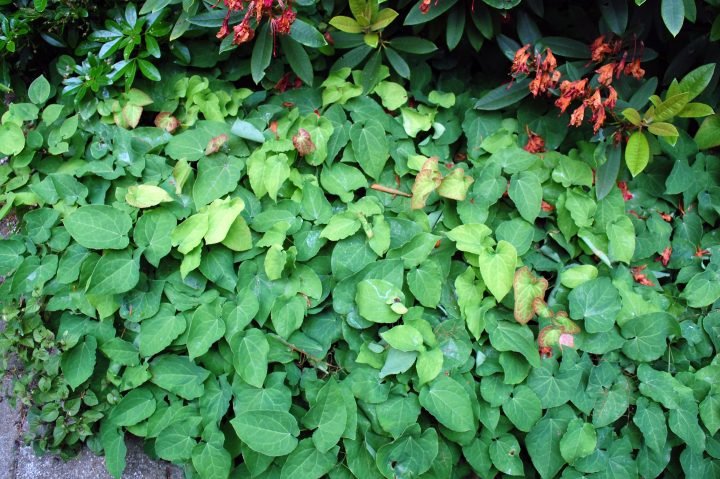
Now that another growing season is upon us, I look at my Point Roberts garden over a decade since I started it, and I am struck by how some plants are now gone while others survive and flourish.
Some, like my beloved perennial blue flax, died a quiet, natural death of old age. The Sea Thrift died a violent death at the jaws of voracious voles during a bumper year. A few, despite my best efforts, never really found a good, permanent home that allowed them to thrive, and so never fulfilled their promise.
Other plants I removed because they proved to be too rambunctious. Happily though, many like Hellebore, Wisteria and Lavender are long-lived successes, putting on good winter, spring and summer shows, respectively.
One stalwart of my shade garden that has long delighted me year round is Epimedium, aka Barrenwort, Bishop’s hat, and a number of other common names.
Interestingly, its botanical name is derived from the ancient Greek and Roman name for an herb described by Pliny the Elder that might or might not be what we now call Epimedium. Pliny warned young women off the plant because it was believed to cause flat-chestedness and sterility – hence the common name, Barrenwort.
I’m not sure how we reconcile that with a variety of raunchier names and the Chinese medicinal use for enhancing sexual performance. On a more somber note, the monikers Bishop’s hat or Bishop’s mitre allude to the shape of the flowers.
Epimedium is a close Eurasian relation of our Pacific Northwest native Vancouveria. However, in my experience, Epimedium is more robust and less fussy about summer moisture. In case you are unfamiliar with it, Epimedium is a long-lived, usually evergreen, perennial sporting dark green elongated heart-shaped leaves that dance on wiry stems.
Under ideal conditions, it forms a clump up to two feet high by three feet around. Ideal conditions are shade or part shade, with occasional summer watering. In less ideal conditions, as under the dry canopy of a western red cedar, it will survive for many years but might not flower or grow vigorously.
In my opinion, Epimedium is a vastly underutilized garden plant. Most varieties provide year-round interest. In late winter, stems unfurl showing delicate white, yellow or pink flowers, followed by light green leaves that usually have red highlights. Spring and summer, the plant is admired for its foliage as either a specimen plant or an understory ground cover.
Depending on the variety and growing conditions, you might get a fantastic autumnal show as the leaves turn a striking bronze color.
If you rate plants by how much maintenance is required, Epimedium is the star of the list. You really do not need to do much for the plant to survive. If you want maximum punch, however, remove all old foliage in late winter. This will not only remove tired looking leaves, but also allow you to admire the tiny flowers as they unfurl from the base of the plant. (The same tip is appropriate for most Hellebores.) Disease-resistant and unpalatable to pests, you don’t need to bother with any protection for it.
I first started growing Epimedium on the east coast, where it thrived alongside Hostas in a garden shaded by a number of maple and linden trees. I would make annual road trips to a distant nursery whose owners seemed to share my fondness for the plant, probably inspired by collector and hybridizer Darrell Probst. What an array of species and cultivars they had, and so many individual variations! Needless to say, I developed quite a collection.
When I returned to live in the Pacific Northwest, I was disappointed to learn that the nursery would not ship to Washington state. I did, however, manage to acquire a plant here and there, sometimes by mail order. Once I even relocated a vintage Epimedium grandiflorum from a friend’s White Rock garden to my garden, where it reminds me of her and her family each time I pass it.
If you are interested in acquiring a plant for autumn planting, I suggest that you try ordering online. I was pleased with one plant I bought from Oregon-based Forest Farm, but their selection is limited to popular cultivars. Oregon-based Joy Creek Nursery and Secret Garden Growers impress me with their offerings, and are worth checking out if you are searching for an unusual variety.
Plant your purchase in a good, loamy soil. You’ll get the best results by situating it in part shade where you can supply some summer moisture. And then stand back and admire the plant for the coming decades!
The Point Roberts Garden Club Tour Committee is currently viewing gardens for consideration in next year’s tour. If you would like to nominate a garden, please contact info@pointrobertsgardenclub.org
Comments
No comments on this item Please log in to comment by clicking here